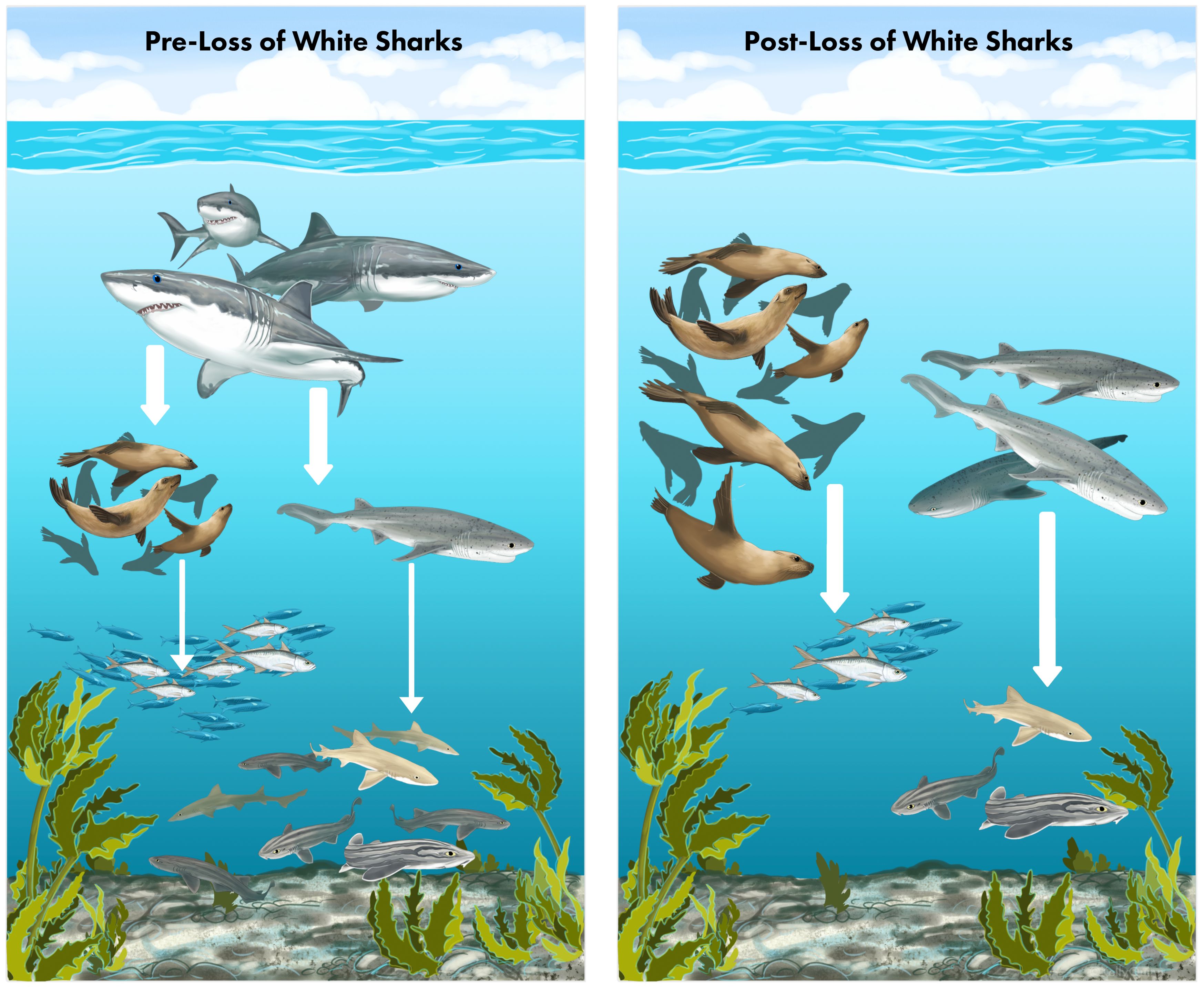- Share
Evidence of cascading ecosystem effects following the loss of white sharks from False Bay, South Africa
Nature and the biosphere
Published Front. Mar. Sci., 25 March 2025
Date (DD-MM-YYYY)
23-07-2025 to 23-07-2026
Available on-demand until 23rd July 2026
Cost
Free
Education type
Article
CPD subtype
On-demand
Description
This study provides empirical evidence of a trophic cascade following the loss of white sharks (Carcharodon carcharias) from False Bay, South Africa. Arrow thickness represents the relative strength of top-down predation effects (thicker arrows indicate stronger effects, thinner arrows indicate weaker effects). Left Panel: Historically, white sharks occupied the apex of the food web, preying on Cape fur seals (Arctocephalus pusillus pusillus) and both competing with and feeding on sevengill sharks (Notorynchus cepedianus). Seals primarily preyed on schooling fishes, while sevengill sharks primarily preyed on benthic sharks. Right Panel: Following the decline and eventual disappearance of white sharks from False Bay, both seals and sevengill sharks have increased in relative abundance, coinciding with declines in small fish that seals feed on and smaller sharks that sevengills prey upon. Illustration by Kelly Quinn / Canvas of the Wild.
Contact details
Email address

The Yarnwicke
119-121 Cannon Street
London
EC4N 5AT
